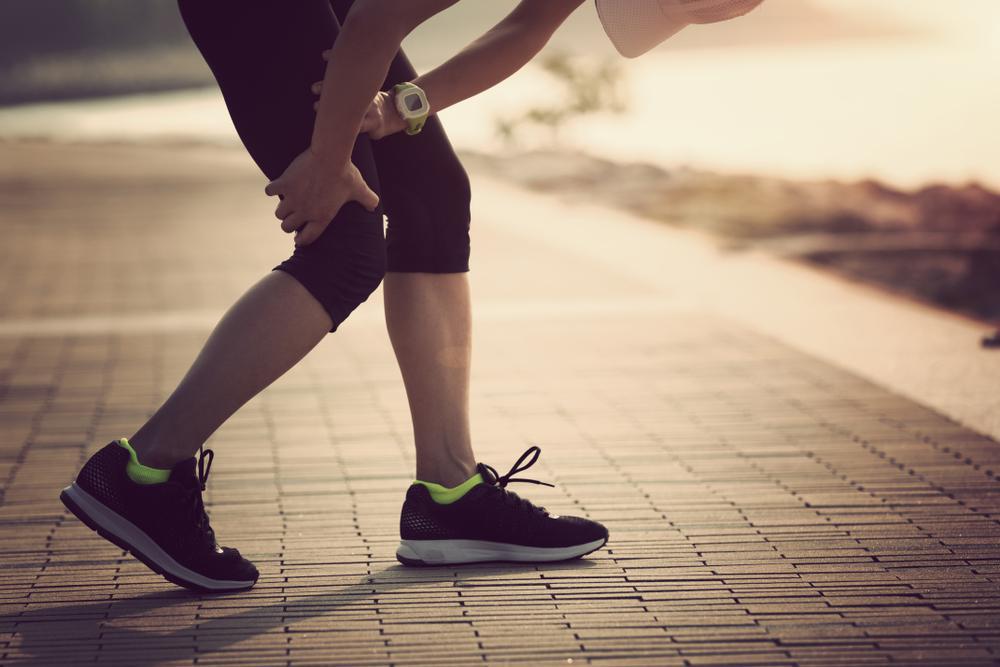Experiencing pain in the back of your knee? You could have one of these five common conditions.
Knee pain ranks as one of the most frequent complaints among athletes, runners, and active adults over the age of 50. Despite common symptoms, there are several different factors that could be causing this discomfort.
Pinpointing the specific location of your joint pain can help guide your doctor towards the source of the problem as well as the most effective treatment options for your condition. If your pain radiates primarily from the back of your knee, for example, the cause can often be traced to one of these five conditions:
1. PATELLAR TENDONITIS
Otherwise known as jumper’s knee, patellar tendonitis often affects basketball players and other athletes. Frequent jumping on hard surfaces can injure or irritate the patellar tendon (the tissue connecting the kneecap to the shinbone), causing pain in the back of the joint. Jumper’s knee can also be attributed to steroid use, which tends to weaken the tendons, or rheumatoid arthritis, a condition that causes joint inflammation.
2. BAKER’S CYST
The repetitive motion of running can result in a buildup of synovial fluid in the back of the knee. Although synovial fluid is meant to lubricate the knee joint, an injury or arthritis may produce an excess of this fluid. When this happens, you might notice a lump behind your kneecap. Baker’s cysts often dissipate on their own or with the aid of physical therapy, but in some cases, you may need to have the cyst drained.
3. MENISCUS TEAR
Your knee is held together by two pieces of wedge-shaped cartilage known as the meniscus. A sudden twist of the knee can rip the meniscus, or the cartilage may simply wear down as you age, making it more susceptible to injury. A common sign of a meniscus tearis a popping sound in your kneecap.
4. OSTEOARTHRITIS
Osteoarthritis is the gradual deterioration of the cartilage in the knee. It can be caused by overuse or injury, such as a ligament or meniscus rupture. Without the cushioning provided by the cartilage, the bones in the knee rub against each other, resulting in joint pain and stiffness.
5. ACL INJURY
Most common in athletes, a tear in the anterior cruciate ligament (ACL) causes pain and instability in the knee. A sudden stop, pivot, or change in direction can put the ACL at risk of a tear. Skiers and soccer or football players frequently suffer ACL injuries, although a sharp bend of the knee when stepping down from a curb can also rupture the ligament.
TREATING POSTERIOR KNEE PAIN
In most cases, pain in the back of the knee can be treated with a combination of rest, anti-inflammatory medication, and physical therapy. One method to try is called the RICE treatment, which includes:
- Resting the leg
- Icing the knee
- Compressing the joint with an elastic bandage
- Elevating the painful leg
While your knee heals, switch your exercise routine to low-impact, non-weight-bearing workouts to put less strain on the joint. These may include cycling and swimming. If you choose to do weight training to strengthen the leg muscles, forego squats with heavy weights in favor of lower impact deadlifts or leg presses. As always, it’s essential to stretch both before and after each workout.
Depending upon the severity of the knee injury or deterioration, an orthopedic specialist may recommend surgery. A minimally invasive arthroscopic procedure can clear up most instances of ligament damage.
If pain in the back of your knee is interfering with your workouts or daily life, it may be time to set up an appointment with an orthopedic specialist. The doctors and physical therapists at New York Bone & Joint Specialists can prescribe a regimen to help you get back to the activities you love. Contact our office to schedule a consultation today.




